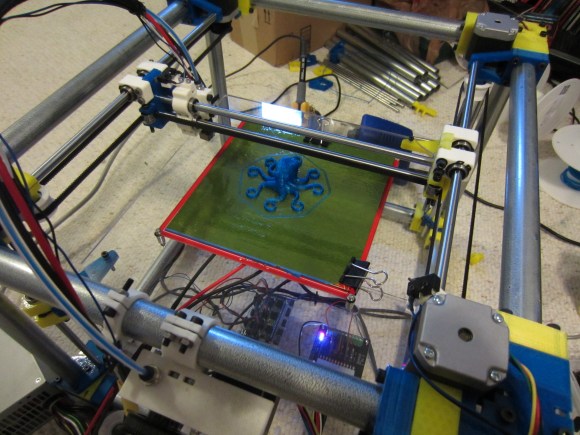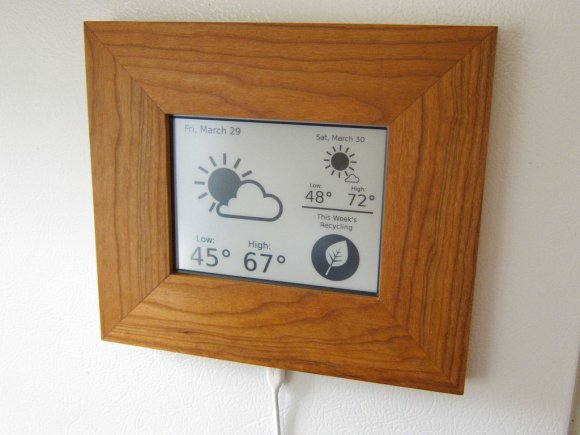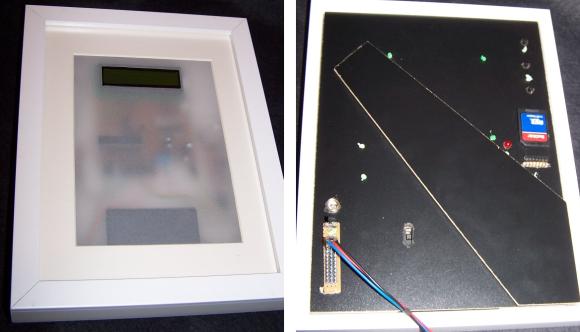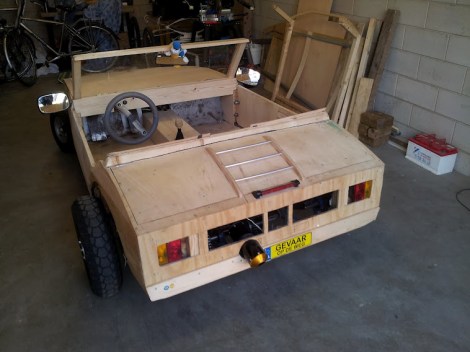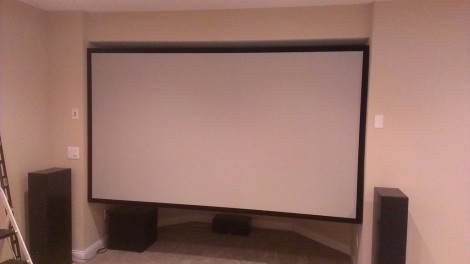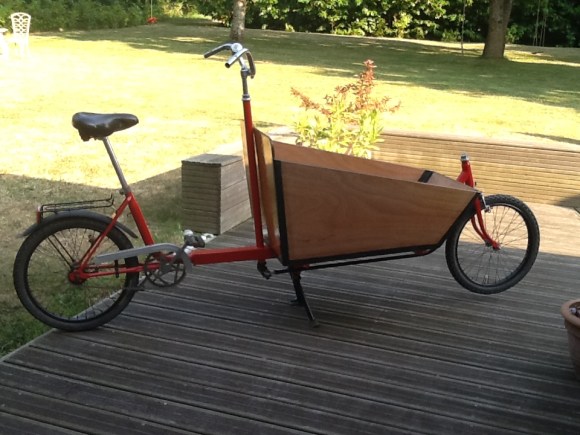
Need to haul some stuff? Got nothing to haul it with? Then fashion yourself a cargo bicycle! We’ve seen cargo bikes before, but none quite like this one. Built from a German “klapprad”, [Morgan] and his father fashioned a well constructed cargo bicycle which is sure to come in handy for many years.
They started by cutting the bike in half and welding in a 1 meter long square tubing extension. The klapprad style bicycle is made from thick metal stock, making it sturdy and easy to weld. This process also make it a true “stretch” vehicle as opposed to one that replaces the front end in order to keep the handle bar assembly near the rider.
Along with some nicely done woodwork and carbon fiber, they used parts from an old mountain bike including a front fork, front bearing and handlebar, tubing from an old steel lamp, a kickstand from a postman motorcycle, and a kitchen sink to complete the build. It should handle well so long as the weight of the cargo is not heavier than the weight of the driver.

